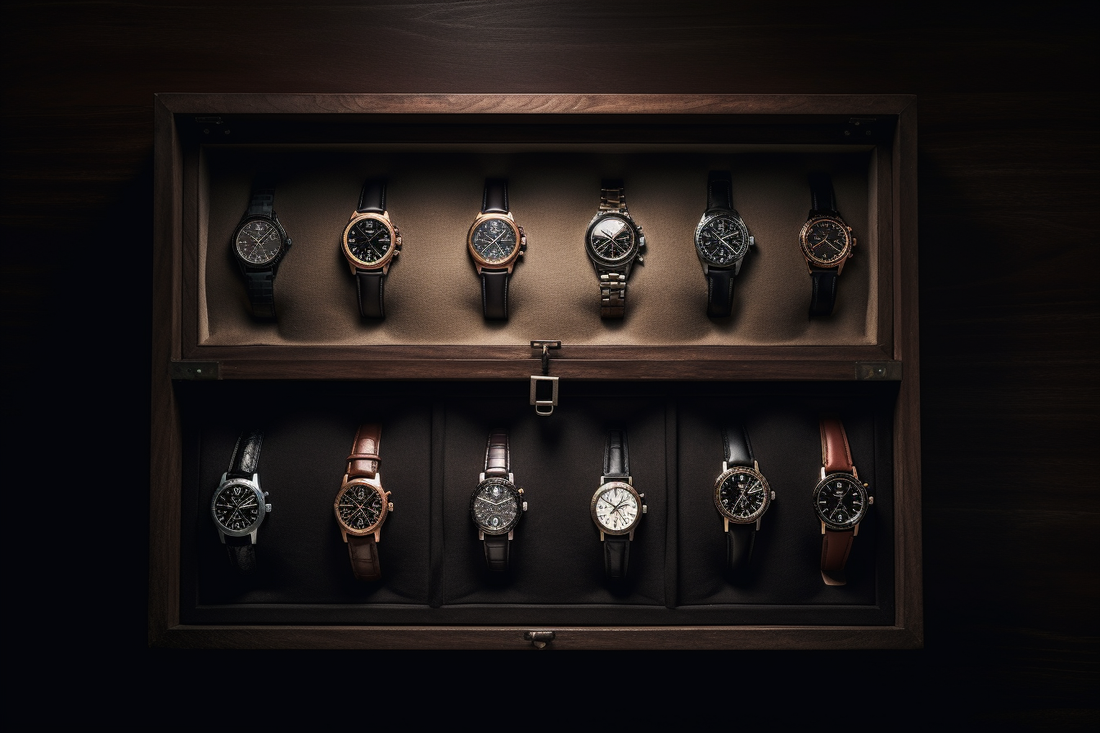
The History of Luxury Watches: From Origin to Modernity
shares
Luxury watches are not only precise timepieces, but also status symbols, works of art and masterpieces of technology. In this blog article, we will examine the fascinating history of luxury watches from its inception to the present day and take a look at the various technologies that have shaped the watch industry over the years.
- The beginnings of timekeeping:
The history of timekeeping goes back thousands of years when humans used the sun, moon and stars to tell the time of day and season. The first clocks were sundials and water clocks, used as early as Ancient Egypt and Mesopotamia.
- The development of the mechanical clock:
The mechanical watch emerged in the 13th century and revolutionized timekeeping. The first mechanical clocks were weight-drive clocks powered by a system of gears and an escapement. In the 15th century, spring-driven clocks were developed that were more compact and lighter, paving the way for the first portable clocks.

- The birth of the pocket watch:
The pocket watch was invented in the 16th century and was the first personal timepiece. Luxurious pocket watches were worn by European nobles and wealthy citizens as status symbols and fashion accessories. Watchmaking was at its peak during this period and many famous watch brands such as Patek Philippe and Breguet were founded.
- The emergence of the wristwatch:
The wristwatch was introduced in the 19th century and was initially intended primarily for women. Men preferred to continue wearing pocket watches. However, World War I led to a surge in the popularity of wristwatches among men as they proved more practical for use on the battlefield.
- The quartz revolution and the Swiss watch crisis:
In the 1960s and 1970s, the introduction of quartz technology brought about a revolution in the watchmaking industry. Quartz watches were cheaper, more accurate, and easier to manufacture than mechanical watches. The Swiss watch industry, famous for its luxury watches, was hit hard by the quartz revolution, losing many jobs and market share.
- The rebirth of mechanical luxury watches:
In the 1980s, the Swiss watch industry began to focus on producing high-quality mechanical watches and reviving its traditional watchmaking craft. Brands like Rolex, Patek Philippe and Audemars Piguet introduced new models that combined luxury, precision and craftsmanship. This rebirth of luxury mechanical watches led to a renaissance in the watchmaking industry and helped re-establish Switzerland as a center of fine watchmaking.

- Modern luxury watches and innovations:
Today, luxury watches are more in demand than ever, combining traditional craftsmanship with modern materials and technologies. Some of the most important innovations in the industry are the use of silicon in movements, the development of new complications and the introduction of smartwatches that combine traditional watchmaking skills with digital technology.
- The future of luxury watches:
The future of luxury watches looks bright as the industry keeps evolving and introducing new technologies and designs. Some of the trends to be observed in the coming years are the increasing use of sustainable materials, the introduction of new materials such as ceramics and the use of advanced 3D printing techniques in the manufacture of watch components.
Conclusion:
The history of luxury watches is a fascinating journey through time, ranging from the first primitive timepieces to the modern masterpieces of watchmaking. Over the centuries, luxury watches have played a central role in fashion, technology and society, becoming coveted objects of desire and prestige. As the watch industry continues to evolve and take on new challenges, we are excited to see future innovations and developments in the world of luxury watches.
